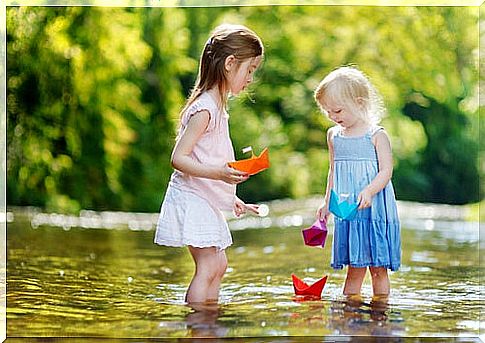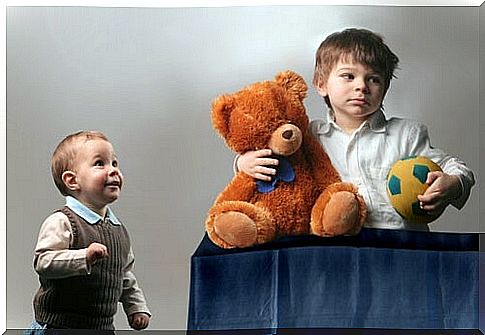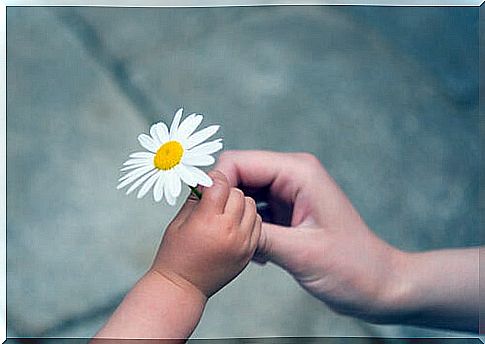How To Teach Children To Share?

Children have a hard time sharing, especially young children. But there is no need to worry. This is a normal part of the child development process. Knowing and accepting this is the first step to growing and becoming a generous person.
The power of possession is a natural part of a child’s growing awareness. During the second and third years, when the child begins to spend more time separated from his family, he works to establish an identity separate from the mother. Hence his constant interest in wanting to do everything and shout “mine, mine.” This ability to create strong bonds is important to being an emotionally healthy person.
When can we expect a child to start sharing
A child doesn’t really understand the concept of sharing until about five or six years old. This means that forcing him to share is useless. What’s more, it is counterproductive. The child sees it as an invasion and can generate in him attitudes that, over time, will lead him to be really selfish.

However, young children can understand some basic rules, such as waiting their turn to use something or respecting that another child is using a toy, for example. In this sense, as children begin to play together and cooperate in their play, they begin to see the value of sharing.
With fixation on maternal contact, children may be more sensitive to the needs of others and thus more willing to share, but they may also be more aware of their own need to preserve their sense of self while do not share.
In this sense, it is easier to share with someone less powerful or less threatening (for example, a younger child) than with a brother or a partner. This depends on the temperament and experiences of each child.
Don’t force the child to share
We have already said that forcing the child to share is not a good idea. Instead, it is better to create an environment that encourages the child to want to share while respecting the normal possession of children, while encouraging sharing and offering a role model.
Observe how the child acts in the group play environment. This gives many guidelines about his way of being, from which interesting ideas can be obtained to teach him attitudes that encourage him to share.

If a child is not integrated into group play, never has a turn to play or feels displaced, it is normal that they do not want to share when they have something. However, when a child has his turn and others respect him and he really has fun when he plays, it is easier for his attitude to share with others to be more positive.
The Importance of Connection and Attachment
A child gives as he receives. It has been observed that children who are nurtured with attachment during the first two years are more likely to share with other children in the next few years, for two reasons.
First of all, children who have received generosity follow the model that they have been given and become generous people. Also, a child who feels good is more likely to share.

Protect the interests of the child as he is taught to share
If a child clings to his possessions, he must be respected. It is normal for a child to be selfish about some things and to be generous with others at the same time. In this sense, it is necessary to alleviate the burden of the child of having to share what he does not want to share.
This, in addition to reinforcing your security and self-esteem, also helps you understand the importance of privacy and respect for others when they are in similar circumstances. It also teaches them the value of property. There is no point in teaching them that everything is shared because, after all, it is not like that.









